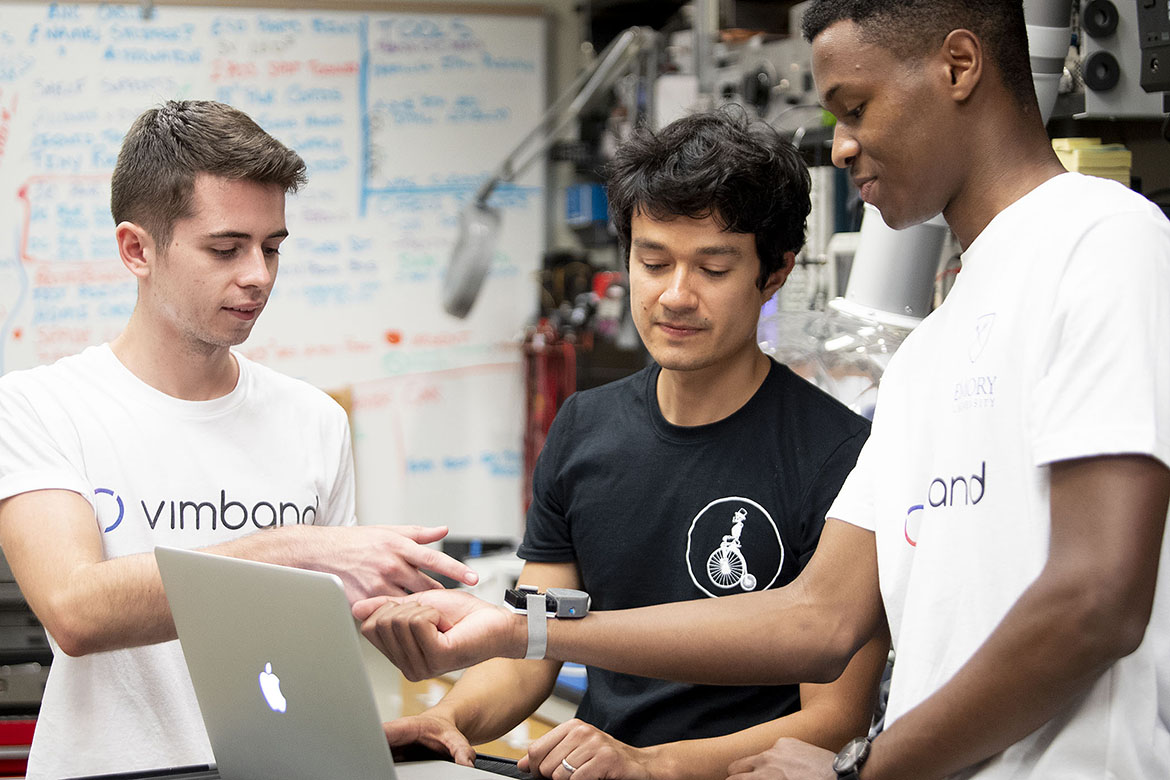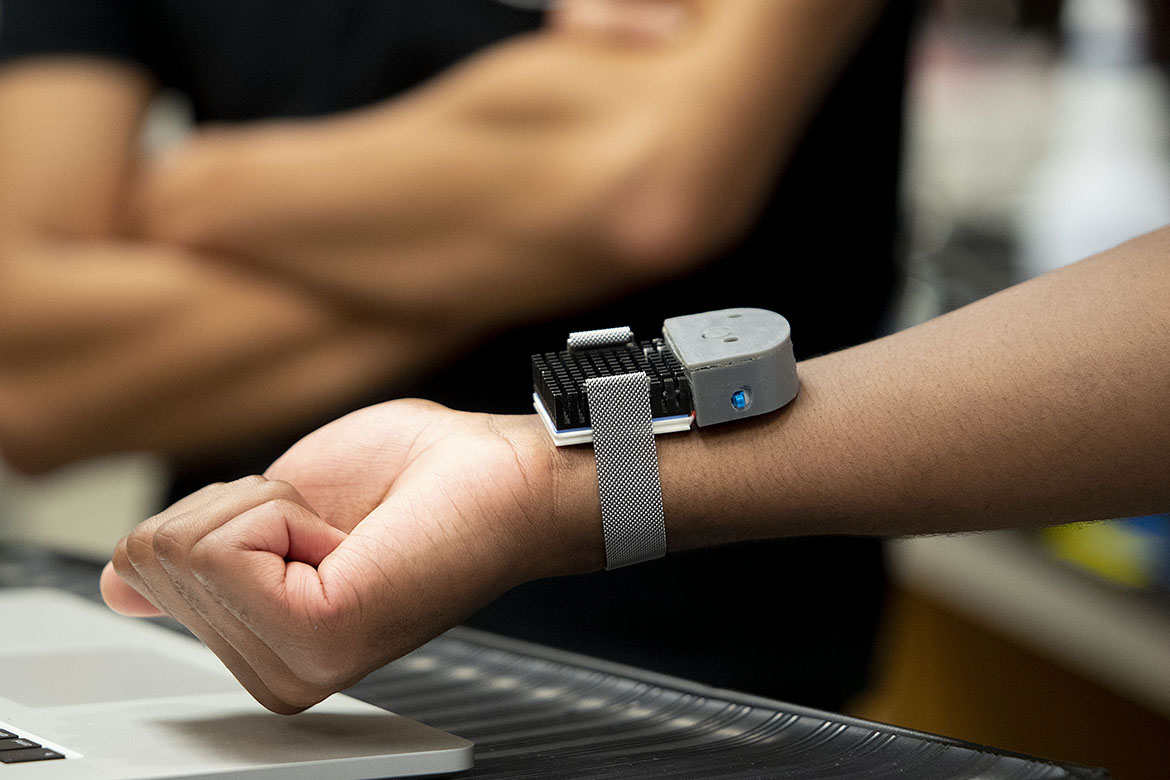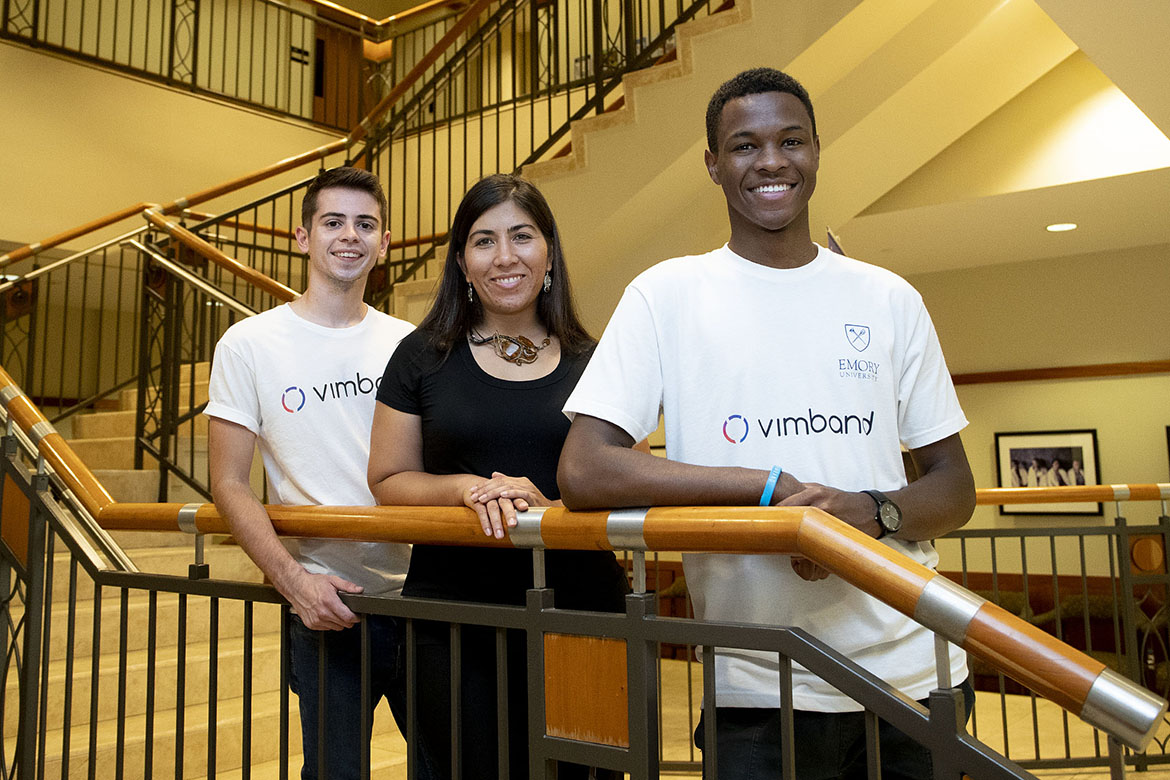
July 17, 2018
By Lyle V. Harris, Consulting Writer
ECL Connections Newsletter
Emory University Campus Life
July 18, 2018
From a construction site in south Georgia to a towering castle in western Europe, a trio of Emory students is on a globe-spanning, million-dollar quest to confront one of the most urgent crises in human history – and the Emory community has been with them every step of the way.
Amid signs that global climate change is accelerating, Kieren
A miniature heating and cooling unit, the rechargeable Vimband can fit around a person’s wrist, neck, or head – body parts served by major arteries critical to regulating body temperature.

The theme of the 2018 Hult Prize is “Harnessing the Power of Energy” – and the winning team claims a coveted $1 million award.
Rosen-Gooding, 20, a rising second-year student from New Mexico majoring in human health, was instrumental in the original concept for the device.
“
Granted, the prize money is a potent incentive. But the
“I’ve taken a lot of classes at the business school that
James, who originally convened the team, is a 19-year-old rising second-year student from Maryland majoring in business and computer science. He created the
 A miniature heating and cooling unit, the rechargeable Vimband can fit around a person’s wrist, neck, or head. Photo by Scott King.
A miniature heating and cooling unit, the rechargeable Vimband can fit around a person’s wrist, neck, or head. Photo by Scott King. “These students – together with the faculty and staff supporting them – exemplify Emory’s commitment to using innovation and imagination to address the most pressing issues confronting our world today,” said President Claire E. Sterk. “Their scholarship holds great promise for our shared future. I could not be prouder of them.”
According to James, the university is a living-learning community that uniquely nurtures students’ scholarship and creativity.
“Emory is not a place where you only go to class and learn, and your professors are not only there to teach you, and your student peers are not just there on the sidelines,” he said. “Everyone around you is encouraging you and helping you with the next step in what you’re doing. It feels like we’re more than students to the faculty. It feels like we’re partners.”
Since launching the
While initially the team was disappointed by their second-place finish against 59 other teams at the regional level, that wasn’t the end of their journey.
On the strength of their pitch, Emory’s team was eventually selected as one of 10 “wild cards” invited to attend a six-week accelerator round sponsored by the Hult Foundation at their headquarters, a castle outside London. If the team advances, they have a shot at winning the final competition on September 15 at the United Nations in New York.
The team has spent the summer working with Georgia Tech engineers to refine their
The team’s real-world research, for example, is being led by Valerie Mac, assistant professor in the Nell Hodgson Woodruff School of Nursing. Mac plans to study Vimband’s effectiveness on construction workers laboring outdoors in Plains, Georgia, in the sweltering July heat.

“It motivates me to work with students who really want to have an impact and are integrating business, technology, research, and public
Wes Longhofer, assistant professor of Organization & Management at the Roberto Goizueta Business School, is among the Emory faculty who have advised the team from the beginning.
“They’re probably the most polished students I’ve ever seen,” Longhofer said. “The kind of work they’re doing is hard even for seasoned entrepreneurs, and to see them keep pushing ahead and redirecting their efforts when they need to is impressive. Their professionalism is incredible and they’re very thoughtful in taking feedback. That kind of humility is rare and admirable.”
Lacking the requisite technical skills, the team also sought help from Josh Méndez, a post-doctoral fellow in the Emory College Department of Physics, who helped the team get started programming the Vimband’s micro-controllers.
“They are so willing to get out of their comfort zone and get to work,” said Méndez, who still fields questions from the team. “They’ve really taken off with this device and I’ve enjoyed watching them make it come to life. No matter what happens, they have a bright future ahead.”
Andrea Hershatter, the Goizueta Business School’s senior associate dean and director of the BBA Program, praised the team for their determination and commitment to ethical business principles.
Employing a “cross-subsidy” business model, the team plans to first sell products in the domestic market. Some of their initial revenues will be used to make the
“These students are very talented and they’ve galvanized a cross-section of different disciplines at Emory to help solve a social justice issue,” Hershatter said. “We’re super-excited about students who pursue these kinds of ventures.”
David Clark, associate vice president of Campus Life, said his department is working to share the students’ significant accomplishments with the Emory community and the general public.
“Students like these three are the very reason we do the work we do,” Clark said. “They show all of us how to be the best we can be.”
Regardless of the outcome, Emory’s Hult Prize team has been a rousing success. The extensive business connections, insights, and exposure that the students have gained in a matter of months at Emory are invaluable assets that might otherwise have taken them years to acquire elsewhere.
“I had never heard about the Hult Prize before, so this experience has opened my eyes to the possibilities of creating and selling something that impacts people’s lives in a serious way,” James said. “It gives me even more energy.